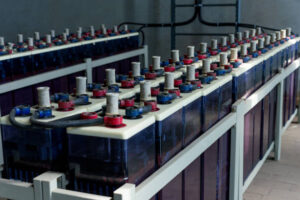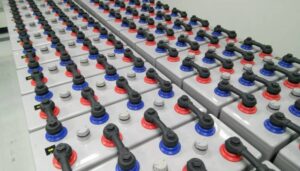When it comes to evaluating the performance and capabilities of a battery, understanding its capacity is crucial. Battery capacity refers to the amount of charge a battery can store and deliver over a given period. In this article , we will explore the three primary methods used to measure battery capacity: load test, open circuit voltage test, and constant current discharge test. By understanding these methods, you can make informed decisions about battery selection and optimize their usage for various applications.

1. Battery Load Test
Battery load testing refers to the process of subjecting a battery to a simulated or real-world load in order to evaluate its capacity and performance. Load testing involves applying a specific electrical load to the battery and measuring its response, including voltage, current, and overall performance under the applied load.
During load testing, the battery is discharged at a controlled rate, typically using a load bank or other load equipment, to simulate the expected operating conditions. The load can be constant or varied, depending on the specific application or testing requirements. By imposing a load on the battery, load testing allows for the assessment of its ability to deliver power effectively and sustain the desired level of performance.
The primary purpose of load testing is to determine the battery's capacity, which is the amount of charge it can store and deliver over a specific period. It helps evaluate the battery's ability to meet the power demands of various applications and provides insights into its overall health and performance characteristics.
Load testing is commonly conducted on various types of batteries, including those used in automotive, marine, industrial, and renewable energy applications. The results of load testing can be used to make informed decisions about battery selection, maintenance, and replacement.
2. Open Circuit Voltage Test
Open Circuit Voltage (OCV) is that the voltage across a battery's terminals when it is disconnected from any external load and allowed to rest for a specific duration. OCV is influenced by the SOC of the battery, which represents the amount of energy remaining compared to its fully charged capacity. Although the relationship between OCV and SOC is nonlinear, it can be used as an indicator to estimate the battery's SOC

Advantages of OCV Testing:
No-connection : OCV testing is a non-connection technique that does not require any additional equipment or intrusive procedures. It can be performed simply by measuring the voltage across the battery terminals.
Cost-effective: OCV testing is a relatively low-cost method for estimating battery state of charge. It does not require complex instrumentation or specialized expertise, making it accessible for a wide range of applications.
Quick and easy: The OCV test can be conducted quickly, as it only involves disconnecting the battery from any load or charging source and measuring the voltage. This makes it a convenient option for performing regular battery health checks.
Suitable for stationary batteries: OCV testing is particularly suitable for stationary batteries, such as those used in renewable energy storage systems or backup power applications. It provides a snapshot of the battery's state of charge without requiring the battery to be in active use.
Disadvantages of OCV Testing:
Non-linear relationship: The relationship between OCV and state of charge is non-linear and can vary depending on battery chemistry, temperature, and aging. This non-linear relationship introduces uncertainties and may result in less accurate SOC estimation, especially at extreme SOC values.
Limited accuracy: OCV testing alone may not provide highly accurate SOC estimation, particularly in batteries with complex chemistry or those that have experienced significant cycling or degradation. Other factors, such as self-discharge and internal resistance, can impact the OCV measurement accuracy.
Temperature dependence: OCV measurements are sensitive to temperature variations. To obtain accurate results, temperature compensation is necessary, which can add complexity to the testing process.
3. Constant Current Discharge Test
Constant Current Discharge Test is to conduct a continuous discharge at a predetermined and constant current level over a specific duration of time for assessing and measuring the performance characteristics of the battery under controlled conditions

Advantage of constant current discharge test
Realistic Performance Evaluation: The constant current discharge test provides a practical simulation of a battery's performance under continuous use conditions. This allows for a more accurate assessment of its endurance and capacity, as it reflects real-world application scenarios.
Quantitative Measurement: By maintaining a constant discharge current, this test allows for quantitative measurements of the battery's performance. It provides specific data, such as the time taken to deplete the battery's charge, which can be used to compare and evaluate different batteries.
Consistency: The constant current discharge test ensures consistent testing conditions by maintaining a steady discharge current. This minimizes variability and enhances the reliability and reproducibility of test results, making it easier to compare different batteries or track changes in a battery's performance over time.
Battery Selection and Optimization: The test results obtained from the constant current discharge test enable users to make informed decisions regarding battery selection. By evaluating the battery's capacity and endurance, it becomes easier to choose the most suitable battery for a particular application. Additionally, the test can help optimize battery performance by identifying any weaknesses or limitations.
Disadvantages of Constant Current Discharge Test:
Limited Application Scope: The constant current discharge test is best suited for assessing batteries in applications with continuous and steady current draws. It may not accurately represent the performance of batteries in applications with intermittent or variable current demands.
Time and Resource Intensive: Conducting a constant current discharge test can be time-consuming and resource-intensive, especially when testing a large number of batteries or batteries with high capacities. The need to maintain a constant discharge current for an extended period may require specialized equipment and careful monitoring.
It is important to note that while the constant current discharge test is a valuable tool, it should be used in conjunction with other testing methods and considerations to gain a comprehensive understanding of a battery's performance characteristics.
The constant current battery discharge test is one of the most effective methods to verify the battery capacity . This method involves discharging the battery at a constant current until it reaches a specified cut-off voltage. By measuring the discharge time and the current, you can calculate the battery capacity.








